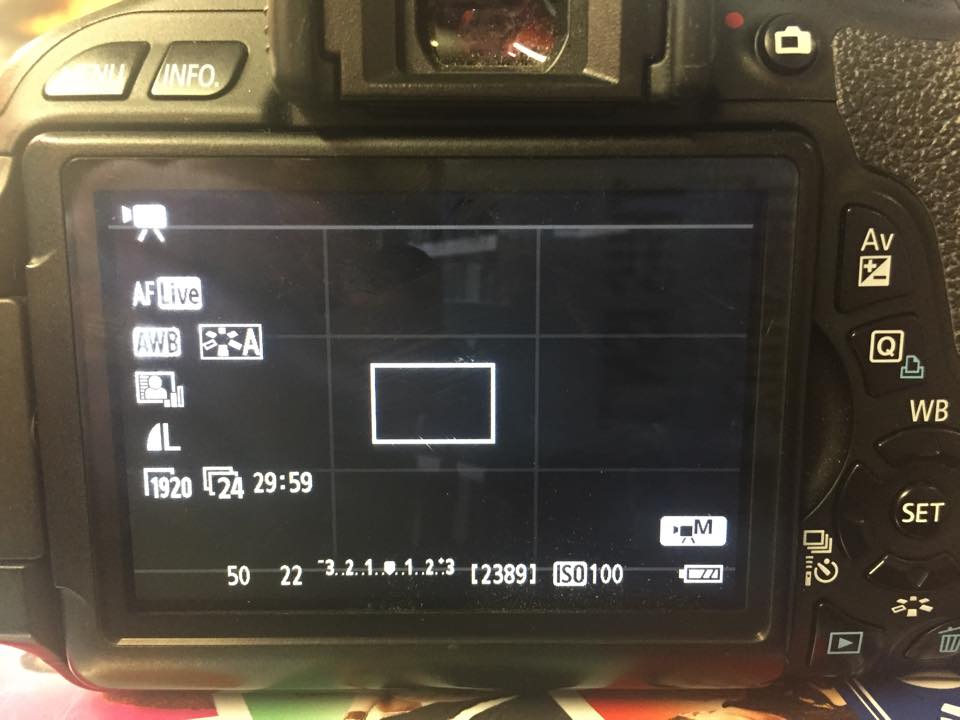In class we briefly looked at adjusting the exposure for film, what might be considered good exposure, and what an ND filter is. I have to admit, I have never quite been confident in adjusting the exposure on my own camera (a Canon 600D), and in the past would simply move the ISO, aperture and shutter speed around until I got something that looked close enough to what I was after, without really understanding what I was adjusting and if it was the best way to go about achieving my image. Therefore, I thought that for this post I would seek to actually understand these values, and what they mean for me as a filmmaker. I found this video useful:
Basically, the narrator explains that to start with, you should set your shutter speed to twice that of your fps. For me, this meant a shutter speed of 50. You should then find an ISO that gives you the best basis for adjusting your exposure, and from there adjust the aperture to find the look you want. This is where it can get tricky. It is easy to adjust the f-stop until you find an image that has good exposure, however that might not be the look you are after, since you are not factoring how you want the depth of field to look. In the video, a narrow depth of field is described as ‘the filmic look’, and one that most will want to achieve when shooting. Of course, this might not be the case, but if it is then you may have to think about incorporating an ND (Neutral Density) filter so that you can lower the f-stop without overexposing the image (if you can’t lower the ISO anymore than you already have). This is demonstrated in the video, and I definitely have a better understanding now of when/why you would use an ND filter.
Despite not owning an ND filter, I did want to go out an practise using my new knowledge of how to achieve the best exposure with my camera, and so I went out and experimented with my own camera.
First of all, to demonstrate my new knowledge, I wanted to see what setting the highest ISO with the lowest f-stop would look like, knowing that with my new understanding of these concepts, the image should be overexposed. Here’s what I got:
So then I did the opposite, with a low ISO and a high f-stop, knowing it should look underexposed:
Happy that I now had a basic understanding of setting these two features on my camera, I attempted to achieve a well exposed image, ignoring for now “the filmic look”. I placed my two models – Marty McFly and Dr. Emmett Brown – in the foreground, in front of a window so that I could attempt to expose an image with a large depth of field. This was tricky, and I wasn’t able to achieve an image where everything appeared to be exposed correctly. None-the-less, here are the steps I took:
First, I attempted to have everything looking as though it was properly exposed. I feel like the troubles I had here probably lend themselves to problematic lighting, but since I was only focussed on adjusting the exposure, this is the best I could do to have the background exposed almost correctly, with the figures in the foreground still visible. As you can see, they are silhouetted (not what I was after) and the background is still slightly overexposed, but in regards to the theory I was using, this was the best overall look I could achieve. Naturally, I wanted to see how I could adjust this to get an image that I was personally more happy with, and so I fiddled some more:
And some more…
And found that I preferred having the background overexposed if it meant keeping the figures better exposed, which of course lends itself to “the filmic look”, and so next I attempted this, bringing the ISO and f-stop right down and focusing on my two models to achieve this:
My aperture is actually so wide here that Marty is not even completely in focus (I could have gone all the way to f/1.4 but didn’t feel the need to) and the look is certainly more desirable. To me, anyway.





